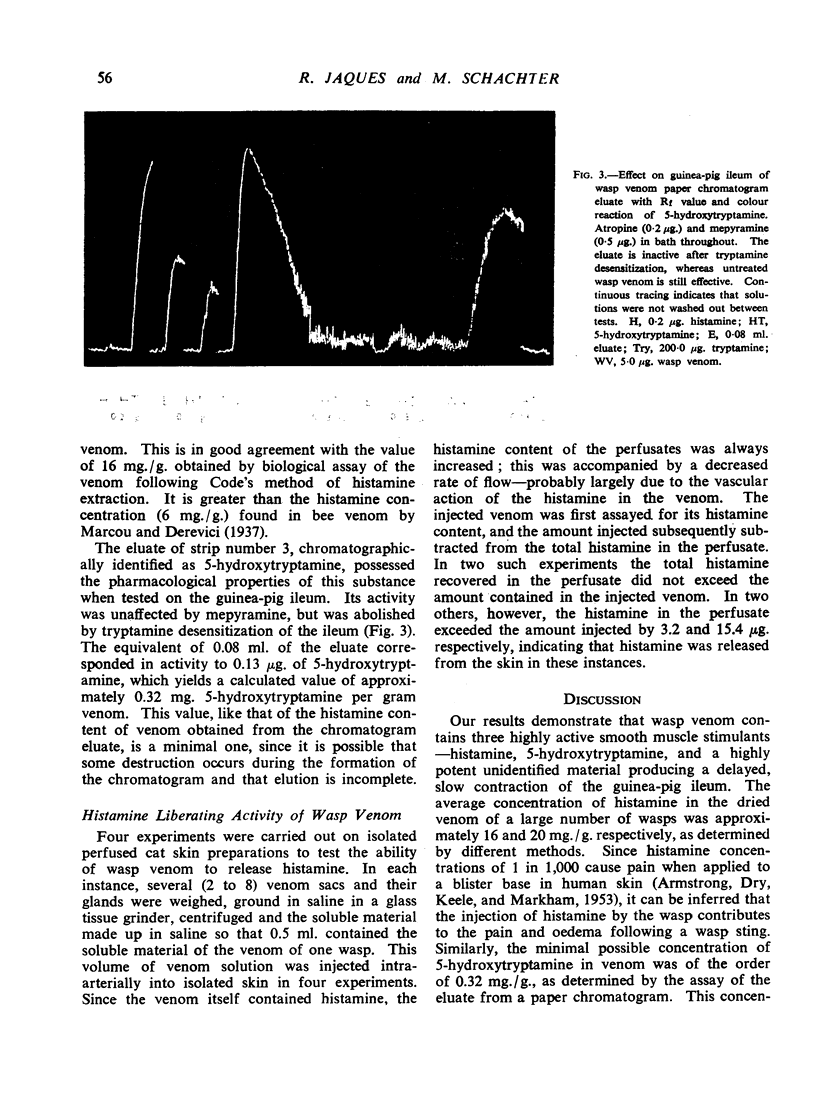Full text
PDF





Selected References
These references are in PubMed. This may not be the complete list of references from this article.
- ARMSTRONG D., DRY R. M. L., KEELE C. A., MARKHAM J. W. Observations on chemical excitants of cutaneous pain in man. J Physiol. 1953 May 28;120(3):326–351. doi: 10.1113/jphysiol.1953.sp004898. [DOI] [PMC free article] [PubMed] [Google Scholar]
- BERALDO W. T. Formation of bradykinin in anaphylactic and peptone shock. Am J Physiol. 1950 Nov;163(2):283–289. doi: 10.1152/ajplegacy.1950.163.2.283. [DOI] [PubMed] [Google Scholar]
- CAMPBELL P. N., WORK T. S., MELLANBY E. The isolation of a toxic substance from agenized wheat flour. Biochem J. 1951 Jan;48(1):106–113. doi: 10.1042/bj0480106. [DOI] [PMC free article] [PubMed] [Google Scholar]
- Code C. F. The histamine-like activity of white blood cells. J Physiol. 1937 Sep 17;90(4):485–500. doi: 10.1113/jphysiol.1937.sp003534. [DOI] [PMC free article] [PubMed] [Google Scholar]
- DALGLIESH C. E. The relation between pyridoxin and tryptophan metabolism, studied in the rat. Biochem J. 1952 Sep;52(1):3–14. doi: 10.1042/bj0520003. [DOI] [PMC free article] [PubMed] [Google Scholar]
- ERSPAMER V., ASERO B. Identification of enteramine, the specific hormone of the enterochromaffin cell system, as 5-hydroxytryptamine. Nature. 1952 May 10;169(4306):800–801. doi: 10.1038/169800b0. [DOI] [PubMed] [Google Scholar]
- ERSPAMER V., BORETTI G. Identification and characterization, by paper chromatography, of enteramine, octopamine, tyramine, histamine and allied substances in extracts of posterior salivary glands of octopoda and in other tissue extracts of vertebrates and invertebrates. Arch Int Pharmacodyn Ther. 1951 Dec;88(3):296–332. [PubMed] [Google Scholar]
- GADDUM J. H. Tryptamine receptors. J Physiol. 1953 Feb 27;119(2-3):363–368. doi: 10.1113/jphysiol.1953.sp004851. [DOI] [PMC free article] [PubMed] [Google Scholar]
- HUMPHREY J. H., JAQUES R. Liberation of histamine and serotonin from platelets by antigen-antibody reactions in vitro. J Physiol. 1953 Mar;119(4):43P–43P. [PubMed] [Google Scholar]
- JAQUES R., SCHACHTER M. A sea anemone extract (thalassine) which liberates histamine and a slow contracting substance. Br J Pharmacol Chemother. 1954 Mar;9(1):49–52. doi: 10.1111/j.1476-5381.1954.tb00815.x. [DOI] [PMC free article] [PubMed] [Google Scholar]
- RAND M., REID G. Source of 'serotonin' in serum. Nature. 1951 Sep 1;168(4270):385–385. doi: 10.1038/168385b0. [DOI] [PubMed] [Google Scholar]


